畳の張り替え
New-ish Tatami Mats!
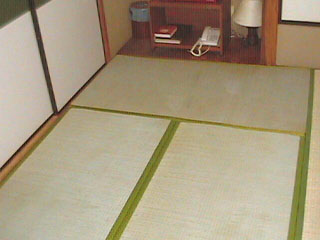
畳の張り替え
New-ish Tatami Mats!

最近、客室の畳の傷や汚れが気になってきたので、畳を張り替えることにしました。
いつもお願いをしていた近所の畳屋さんが廃業をしてしまったので、今年は他の畳屋さんを紹介してもらいました。紹介をしていただいたのは森田畳屋さんで、ご主人の森田 茂さんはこの道48年の職人さんです。
重さにして1畳約30キロの畳を一人で軽々と運び出し、車でお店まで運んでいきます。
基本的に畳の中味は「わら」でできており、これを「床(とこ)」といい、表側にある「いぐさ」でできた「ござ」を「表(おもて)」といい、端に縫いつけてある布を「縁(へり)」と呼ぶそうです。
今回は畳の表の部分の裏側がまだ使えるということで表裏を入れ替えて張りなおす「張り替え」または「裏替え」と呼ばれる作業をしてもらいました。
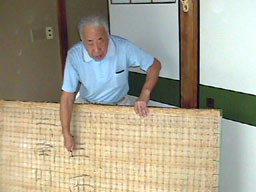
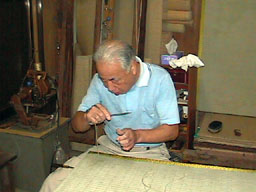
ご主人の話しでは、「昔はすべて手作業で行っていたが、今は1部分だけ縫いつけに機械を取り入れています。しかし機械では強弱をつけるのが難しく、やはり手で縫いながら微妙な強弱をつけるには職人技が必要です。」とのことでした。
しかし最近ではすべての行程を機械で行って数をこなし、低コストで引き受ける畳屋さんも増えてきているようです。また中味の「床」の部分に「わら」ではなく特殊なボードを使っている畳もあるそうです。
今回は、客室12部屋の畳を約2週間程かけて、一部屋一部屋丁寧に仕上げていただきました。
真っ青な畳の色と、畳の匂い、そして素足の感触がとても心地いい気分にさせてくれますよ。
New-ish Tatami Mats!
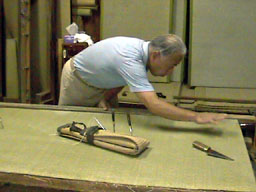
Tatami is the most popular floor surface in the Japanese house. Our
guest rooms all havetatami. Over the years, however, these tatami mats become
worn out, so we decided
it was time to fix them up in the traditional manner.
The old-time tatami shop right near our inn has gone out of business so
this time we ordered the work on our tami from another shop, the Morita
Tatami Shop. The owner, Shigeru Morita, is an artisan who has been making
tatami for 48 years.
The weight of a tatami mat is about 30 kilograms. Mr. Morita is used
to this weight and can carry the mats by himself. He carried our tatami
mats to his car and brought them to his shop to work on them.
The foundation or base of the tatami mat is made of straw and is called
"toko" (floor) in Japanese. The toko is about 5 centimeters thick.
The upper, exposed part of the tatami mat, or "goza", is made
of rush. This surface part is also referred to as "omote" or the
top side. The strip of cloth that covers the edges of the tatami mat is
called "heri".
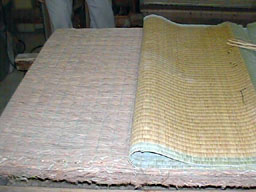
Mr. Morita placed the "omote" outside cover of our mats upside
down so that the part that had been underneath, which had not been exposed
to use, was on the surface. This is the way we maintain and renew tatami
mats.
Mr. Morita told me that the work was all be done by hand in the past.
Nowadays, though, tatami are often made, stitched together and repaired
by machine. Mr. Morita does his work partly by hand and partly by machine.
He said that it is difficult to use just the right balance of strength and
weakness when using a machine. So you need an experienced tatami maker with
fine skill to make and repair good tatami even when a machine is used. The
workman's skill is very important.
Many tatami shops now make and repair tatami completely by machine. Some even use plastic instead of straw for the "toko" or 5-centimeter thick part. When this is done, the quality and comfort of the tatami is reduced. Mr. Morita deplores the use of plastics for tatami.
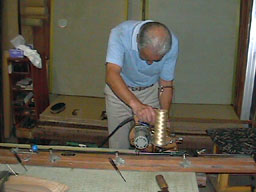
Our 12 guestrooms' "new" tatami has just been finished. We asked Mr. Morita to do the work for each room carefully. The color of newly sided tatami is light green and it smells marvelous. When you walk on it in your bare feet you feel comfortable and content. Have you ever slept on or walked on tatami?